Invented by Sayed Shahabuddin Hoseini, Nai-Kong V. Cheung, Memorial Sloan Kettering Cancer Center
The global market for Anti-CD33 antibody agents is primarily driven by the increasing prevalence of AML. According to the American Cancer Society, AML accounts for approximately 1% of all cancer cases, with an estimated 20,000 new cases diagnosed in the United States alone in 2021. This rising incidence of AML has created a significant demand for effective treatment options, including Anti-CD33 antibody agents.
Furthermore, advancements in biotechnology and immunotherapy have contributed to the growth of the market. Anti-CD33 antibody agents are a part of the broader field of immunotherapy, which utilizes the body’s immune system to fight against cancer. These agents have shown promising results in clinical trials, leading to their approval by regulatory authorities such as the U.S. Food and Drug Administration (FDA).
One of the key players in the market is gemtuzumab ozogamicin (Mylotarg), an Anti-CD33 antibody-drug conjugate. It was the first Anti-CD33 antibody agent approved by the FDA in 2000 for the treatment of AML. However, it was later withdrawn from the market due to safety concerns. In 2017, gemtuzumab ozogamicin was re-approved by the FDA with a revised dosing regimen, reflecting the potential of Anti-CD33 antibody agents in AML treatment.
Another notable player in the market is vadastuximab talirine (SGN-CD33A), a novel Anti-CD33 antibody-drug conjugate currently under investigation. It has shown promising results in early clinical trials, demonstrating high response rates and improved survival outcomes in patients with AML. The positive data from these trials have generated significant interest in vadastuximab talirine, making it a potential game-changer in the market.
In addition to gemtuzumab ozogamicin and vadastuximab talirine, several other Anti-CD33 antibody agents are also being developed and tested in clinical trials. These include monoclonal antibodies, bispecific antibodies, and antibody-drug conjugates. The market is expected to witness further growth with the introduction of these novel agents, providing more options for AML patients and potentially improving treatment outcomes.
Despite the promising outlook, there are challenges that need to be addressed in the market for Anti-CD33 antibody agents. One of the key challenges is the high cost associated with these therapies. Immunotherapies, including Anti-CD33 antibody agents, are often expensive due to the complex manufacturing processes and research and development costs involved. This can limit their accessibility and affordability, particularly in developing countries.
Furthermore, the market faces competition from other treatment modalities for AML, such as chemotherapy and targeted therapies. While Anti-CD33 antibody agents have shown efficacy in certain patient populations, they may not be suitable for all AML patients. Therefore, a personalized approach to treatment selection is crucial to ensure optimal outcomes.
In conclusion, the market for Anti-CD33 antibody agents is witnessing significant growth due to the increasing prevalence of AML and advancements in immunotherapy. The approval and re-approval of gemtuzumab ozogamicin, as well as the promising results from clinical trials of vadastuximab talirine, have fueled the market’s expansion. However, challenges related to cost and competition need to be addressed to ensure the widespread adoption of these agents and improve outcomes for AML patients.
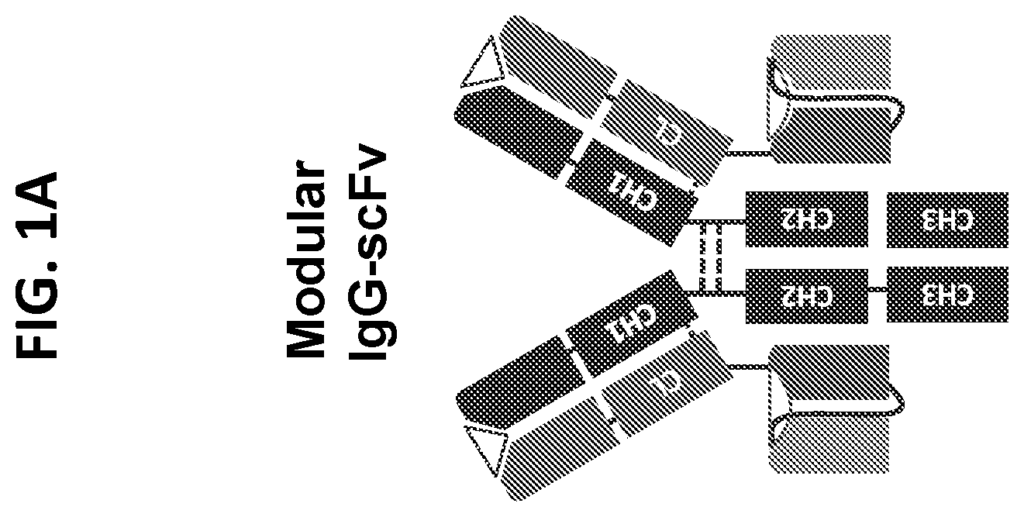
The Memorial Sloan Kettering Cancer Center invention works as follows
Anti-CD33 antibodies are provided, including anti CD33 antibody agents that have an IgG scFv form. There are also various methods and reagents relating to this, such as for detection, prevention and/or therapeutic treatment of CD33 related diseases, e.g. leukemias like AML.
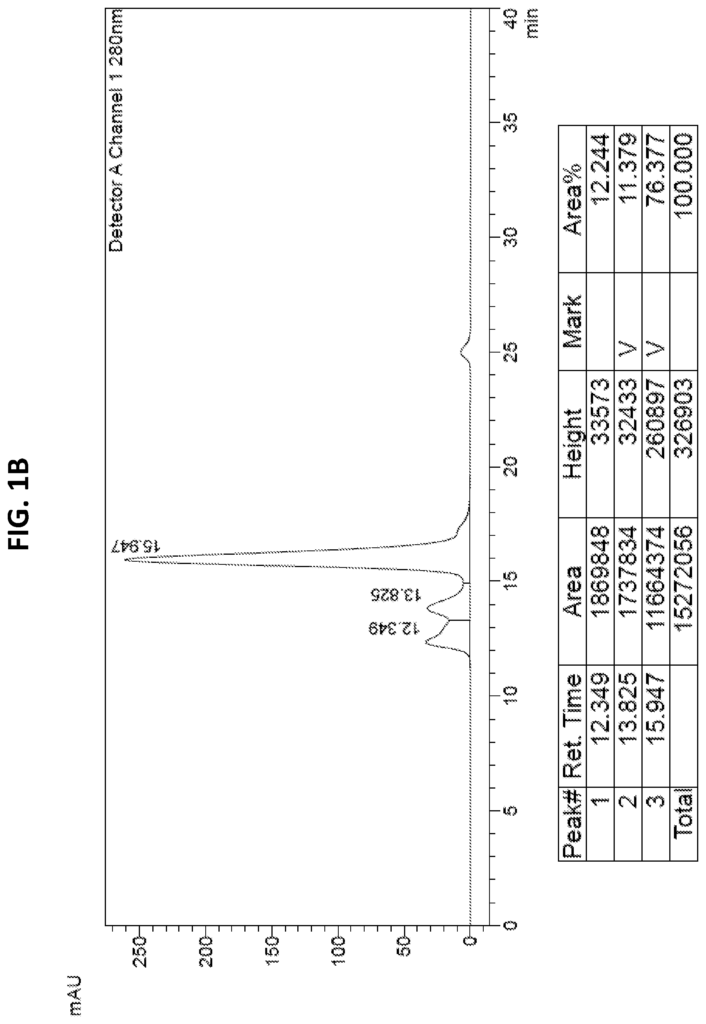
Background for Anti-CD33 antibody agents
The present disclosure includes, among others, specific multispecific antibodies (e.g. bispecific antibodies) that bind an epitope on the human CD33 protein. In certain embodiments, binding moieties from humanized antiCD33 antibodies, such as humanized M195, are included in multispecific antibody (e.g. bispecific) agents. The present disclosure recognizes that certain multispecific antibodies that include a moiety that binds CD33, as described herein, have improved functional properties.
In some embodiments of multispecific antibodies agents, the present disclosure includes a first moiety of binding based on huM195, i.e. an anti-CD33 moiety, and a secondary moiety. In certain embodiments, the second binding moiety is bound to an agent present on immune cells. In certain embodiments, the second binding moiety binds an agent on T cells (e.g. CD3). In some embodiments, the second binding moiety is able to interact with an inorganic or organic compound. The present disclosure acknowledges that multispecific antibodies that can bind CD33 and a secondary agent are useful in treating and diagnosing diseases associated with CD33 such as, for instance, CD33-expressing carcinomas.
In some embodiments, the provided multispecific agent (e.g. a bispecific agent such as CD33BsAb), includes two identical immunoglobulin chains and two identical polypeptides. In certain embodiments, the fusion polypeptides include: an immunoglobulin heavy chain domain, and a binding region such as a single-chain variable fragment (scFv). 1A). In some embodiments, the fusion polypeptides include: a scFv fusing to a lighter chain, or a VHH fusing to a lighter chain, or any binding domain attached (or a part thereof) to a lightweight chain. In some embodiments provided multispecific antibodies (e.g. bispecific antibody drugs, such as CD33BsAb), include heavy chains which each have a heavy-chain variable domain sequence identified by SEQ ID No:1 or 2. In certain embodiments, the light chain portion in a fusion polypeptide includes a light-chain variable domain sequence SEQ ID No:3 or 4.
In certain embodiments, the provided multispecific antigen (e.g. bispecific antibody, such as CD33 BsAb) contains a heavy-chain variable region that includes a series that is at or above 70% identical (e.g. at or below 70%, 75% 80%, 90% 95% 96% 97% 98% or 99% identical) to SEQID NO:1 or 2. The light-chain portion of the fusion protein includes a similar sequence at or below 70% identical (e.g. at
In some embodiments are provided multispecific antibodies agents (e.g. bispecific antibody agent such as CD33BsAb), which comprise heavy chains each comprising a sequence identified by SEQ ID No:9. In some embodiments, the light chain portion in a fusion protein comprises a SEQ ID No:10. In some embodiments, the provided bispecific antigen, such as CD33-BsAb includes both a heavy and a light chain polypeptide. The heavy chain variable region comprises a sequence at least 50% identical to that of SEQ NO:9. The light chain polypeptide portion includes a similar sequence at about 50% identical to that of SEQ NO:10.
In some embodiments, the provided multispecific agent (e.g. a bispecific agent such as CD33 BsAb) comprises a fusion peptide that includes an scFv fused to a second target fused at the C-terminus an immunoglobulin (or antigen binding portion thereof), e.g. an anti-CD33. In some embodiments the fusion polypeptide also contains a linker.
In certain embodiments, multispecific antibodies (e.g. bispecific antibodies, such as a CD33 BsAb) or sequences thereof may include an anti-CD33 variegated domain and atleast one other binding region, such as anti-OKT3 to retarget T cells for tumor cytotoxicity or BenzylDOTA-metal-binding domains, e.g. C825, for multiple-step pretargeting or Clone 35 CD137 for ADCC using anti-41BB In some embodiments, the multispecific agent is a bispecific agent that includes an scFv binds to a T cell antigen. In some embodiments a T cell antigen is called CD3. In certain embodiments, the bispecific antibody agent contains a humanized scFv of OKT3. In certain embodiments, the fusion polypeptide includes an scFv containing a sequence that is identified as SEQ ID Nos 11-17 or 27.
In some embodiments of the multispecific antibodies (e.g. bispecific antibody drugs, such as CD33BsAb), heavy chains are provided that contain a sequence identified by SEQ ID No: 24. In certain embodiments, the multispecific antibodies (e.g. bispecific antibodies, such as CD33BsAb) also contain fusion polypeptides which each have a sequence known as SEQ NO: 26.
In some embodiments, a BenzylDOTA-metal-specific scFv is included in a multispecific agent (e.g. a bispecific agent such as a CD33 BsAb). In some embodiments, a scFv which specifically binds a BenzylDOTA-metal can be a C825 scFv. In certain embodiments, a fusion polypeptide includes an scFv containing a sequence identified by SEQ ID No: 18. In certain embodiments, the fusion polypeptide includes an anti-CD33 light chain immunoglobulin sequence fused with a BenzylDOTA-metal-binding scFv. In some embodiments an anti-CD33 anti BenzylDOTA fusion contains a linker. In certain embodiments, a anti-CD33 anti BenzylDOTA fusion peptide contains a sequence that is identified as SEQ NO: 19.
In certain embodiments, multispecific antibodies (e.g. a bispecific agent, such as CD33BsAb), contain a variant Fc area, in which said variant Fc contains at least one modification of amino acids relative to the wild-type Fc. Fc modifications can include but are not restricted to those that alter the effector function in certain embodiments. Fc variants can include one or more engineered carbohydrate forms, which are carbohydrate compounds that are covalently attached onto a molecule containing an Fc area, and that differ chemically from a parent molecule containing an Fc.
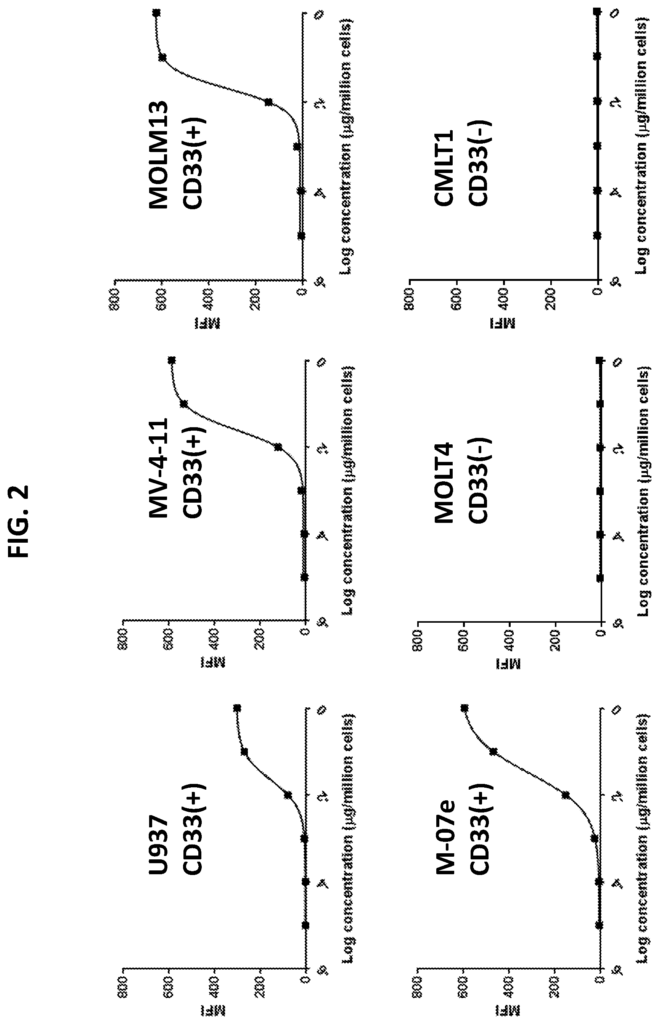
Kabat numbered the Fc region of a multispecific agent (e.g. a bispecific agent such as CD33-BsAb), as follows: “In certain embodiments, an antibody agent with a CH2 domain that has a mutation N297A in it, is a multispecific agent. In certain embodiments, heavy chains with a N297A mutant lack glycosylation. In some embodiments a heavy molecule containing a N297A mutant lacks C1q or FcR binding. In certain embodiments, an antigen agent consists of a heavy-chain containing an Fc region with a mutation selected from D265A or K322A. In certain embodiments, an antigen agent includes a heavy-chain containing an Fc region with a mutation N297A and a mutation K322A. In certain embodiments, an anti-bodie agent contains a heavy ring containing an Fc containing a D265A and N297A mutations. In some embodiments an antibody agent includes a heavy chains comprising an Fc area comprising a D265A and K322A mutations. In some embodiments the heavy chain contains a sequence that can be identified by SEQ ID Nos. 20-22.
In some embodiments, the bivalent bind to an antigen, e.g. CD33, is characteristic of a multispecific antibodies agent (e.g. a bispecific agent such as a CD33 BsAb). In some embodiments a multispecific agent (e.g. a bispecific agent such as a CD33 BsAb) is tetravalent. For example, with bivalent attachment to two antigens.
In certain embodiments, an antibody agent that is multispecific (e.g. a bispecific agent such as CD33-BsAb), binds with a cell line of AML (e.g. HL60 with EC50 ranging from 0.1 pM up to 1?M. In certain embodiments, the molecular mass of a multispecific agent (e.g. a bispecific agent such as a CD33 BsAb) is above a threshold for kidney excretion (e.g. a weight greater than 70 kDa).
Also, nucleotide-sequences are provided that encode any or all polypeptides sequences in the multispecific antibody agents described herein. These sequences may be combined with one or more vector sequences, regulatory elements (e.g. integration signals and/or replica signal) or vector sequences. In certain embodiments, a nucleic-acid molecule is provided that encodes a humanized anti CD33 antibody heavy chain. This nucleic-acid identifies itself as SEQ NO: 23. In certain embodiments, a nucleic-acid molecule is provided that encodes fusion polypeptide. This nucleic-acid is identified by SEQ ID No: 25. In certain embodiments are also recombinant vectiels that contain nucleotide coding bispecific antibodies from the present disclosure. In certain embodiments, nucleotide and/or vectors must be isolated.
Also, host cells are provided that contain a nucleic acids as described in this document. In certain embodiments a cell can be either eukaryotic or prokaryotic. In some embodiments, the host cell can be a mammalian, yeast, insect or bacterial cell. E. coli is an example of a prokaryotic cell. Examples of eukaryotic hosts include COS cells and HEK293 cells.
Also, provided are technologies for the production of multispecific antibodies agents as described in this invention (e.g. CD33-BsAb).” In certain embodiments, the production of a multiple-specific antibody agent can involve, for instance, a step involving culturing a host cell in conditions that allow expression of a binding agent multispecific (e.g. a CD33BsAb agent). In some embodiments, the provided technologies may also or alternatively involve separating an antibody (e.g. CD33-BsAb) from a culture medium of a cell that produced it.
The present disclosure provides compositions that contain a multispecific agent antibody (e.g. a bispecific agent antibody, such as CD33-BsAb). In certain embodiments, the composition is a drug composition. In certain embodiments, the pharmaceutical composition comprises a pharmaceutically-acceptable carrier or diluent.
In some embodiments, multispecific antibodies (e.g. bispecific antibodies, such as CD33 BsAb) can be useful or used to manufacture a pharmaceutical composition. In certain embodiments, pharmaceutical compositions include a multispecific agent (e.g. a bispecific agent, such a CD33BsAb), and a pharmaceutically accept carrier. In some embodiments, methods for manufacturing pharmaceutical compositions are also provided. These methods may include steps such as combining a CD33BsAb with a pharmaceutically-acceptable carrier, and/or formulating a mixture of the two to be administered to a patient. In certain embodiments, pharmaceutical compositions are formulated for intravenous delivery. In certain embodiments, the pharmaceutical composition is used to treat cancer (e.g. AML).
In some embodiments, methods are provided that include a step such as: administering to the subject a composition containing and/or delivering a multispecific agent antibody (e.g. a bispecific agent antibody, such a CD33 BsAb). In certain embodiments, the multispecific antibody agents of the present disclosure are therapeutic agents (e.g. a CD33BsAb or a bispecific agent). In certain embodiments, the multispecific antibody agents of the present disclosure are diagnostic agents (e.g. a CD33 BsAb).
In some embodiments, methods are provided that include a step that includes administering a composition to a patient in need of it that contains and/or delivers a monospecific antibody agent. (e.g. a CD33 BsAb or a bispecific agent such as a CD33BsAb.) This is done to a patient who has received IL2 previously, or will receive IL2, so that they get both. In some embodiments, methods are provided that include a step that includes administering a composition to a patient in need of it that contains and/or delivers IL2 for a patient that has received or will receive a multispecific agent (e.g. a CD33BsAb).
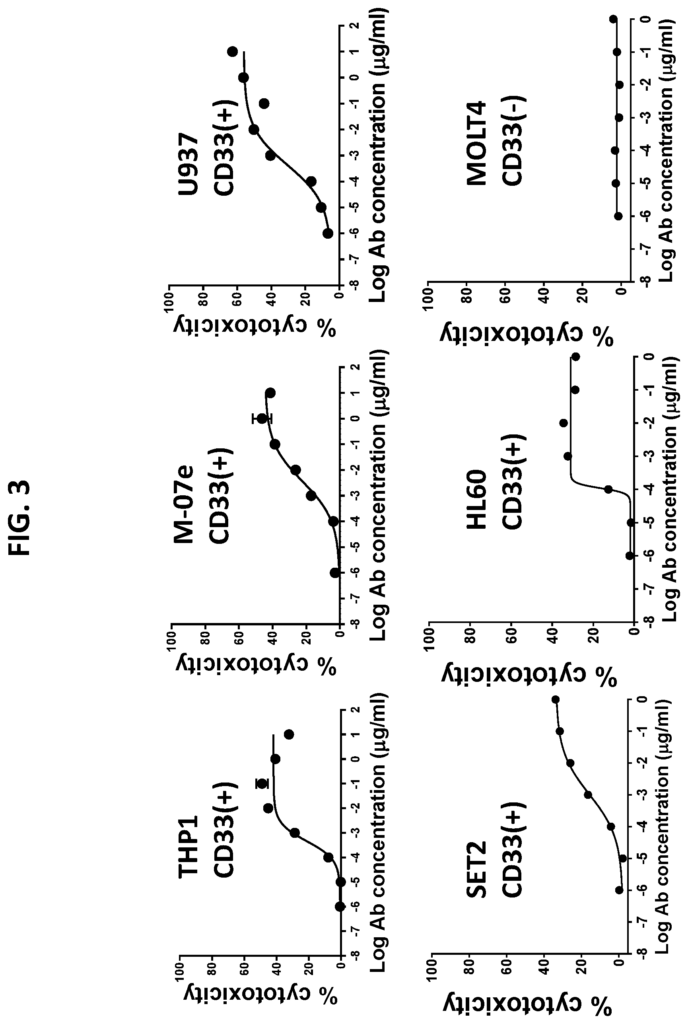
Provided are T cells which are activated and/or armed with a multispecific agent antibody of the present disclosure. (e.g. a bispecific agent antibody, such as CD33-BsAb). In certain embodiments, a population of the T cells is provided. Compositions comprising T cells or populations of T-cells armed and/or active with a multispecific agent (e.g. a CD33 BsAb) are disclosed in some embodiments. In certain embodiments, T cells or populations of T-cells are armed with the multispecific agent of the current disclosure (e.g. a CD33BsAb). In certain embodiments, the multispecific agent is used to activate a T-cell or population of cells (e.g. a CD33 BsAb).
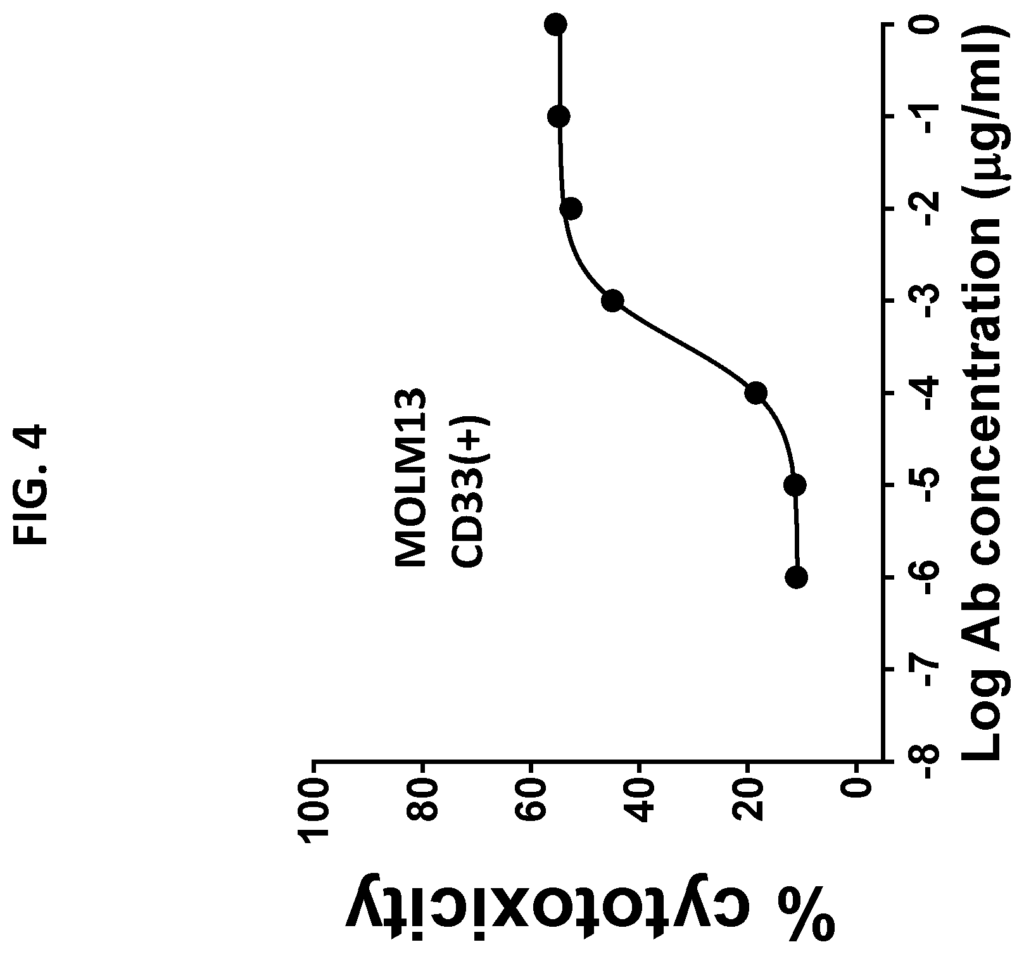
Click here to view the patent on Google Patents.
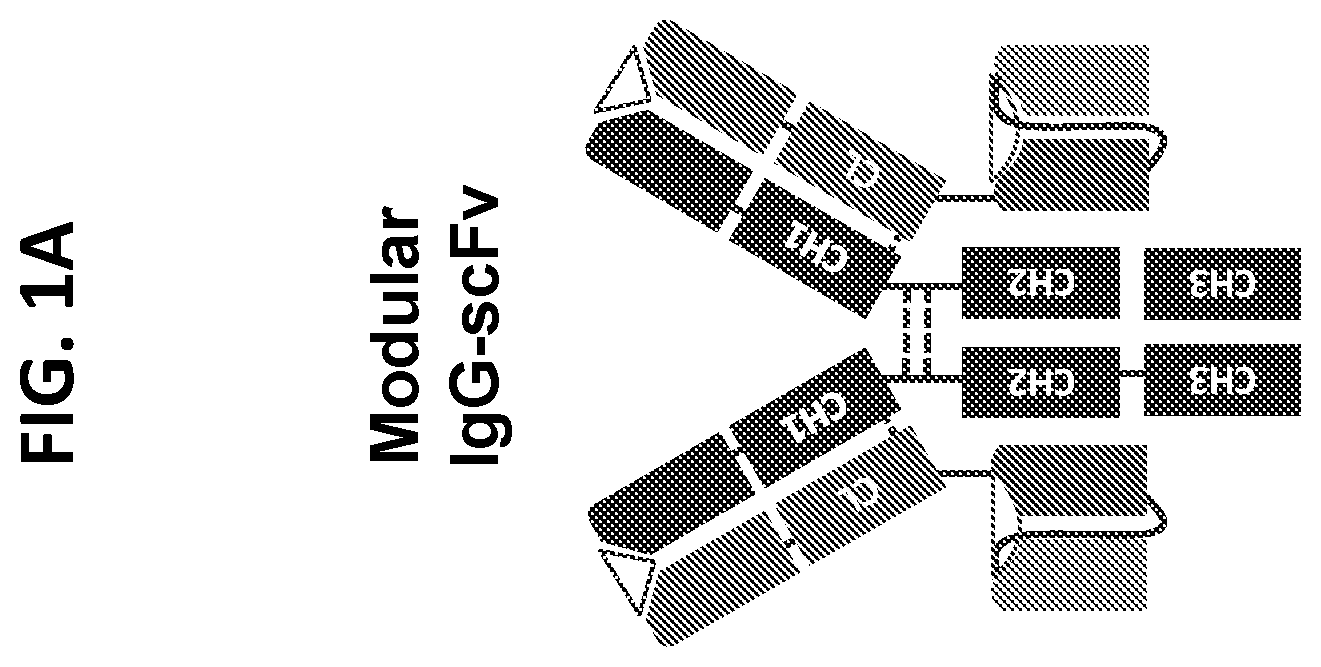
Leave a Reply